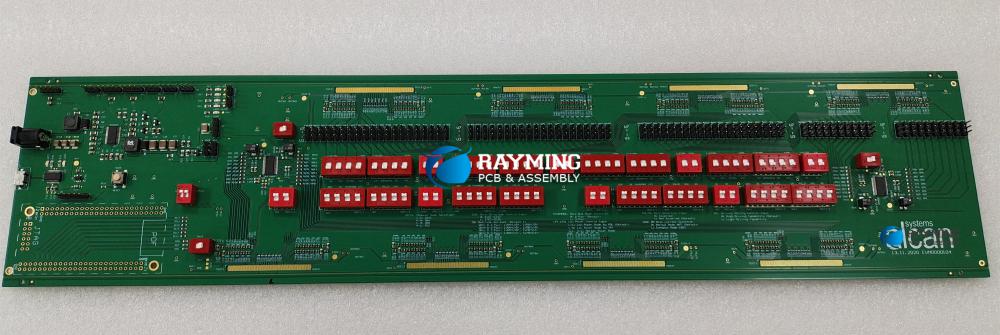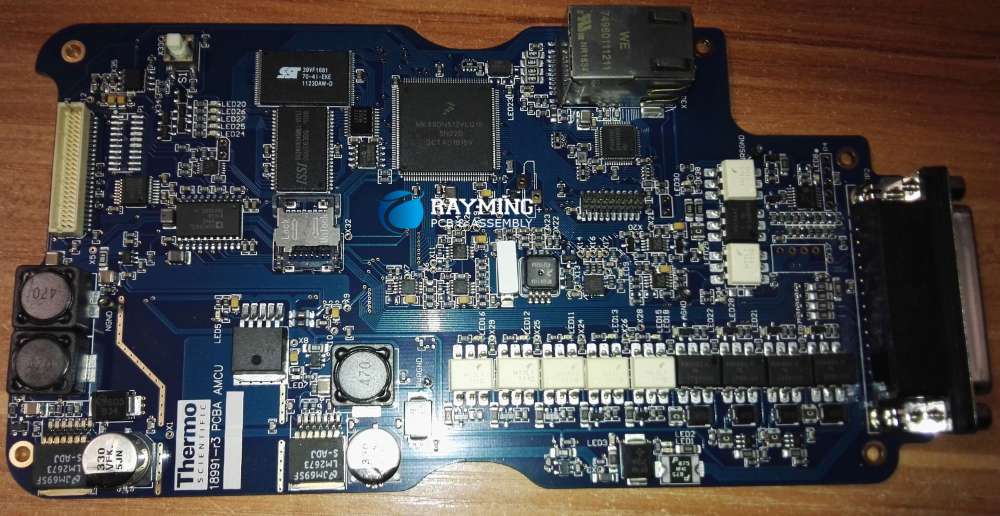Introduction
Building the first functional prototypes is a crucial step in any new electronics product development. Prototype assembly allows engineers to transform the design from concepts and simulations into a real, working circuit for validation testing.
However, assembling the first few iterations of even a simple electronic device requires expertise, precision tools and equipment. This makes outsourcing to a professional electronics assembly service the preferred option during prototyping.
In this comprehensive guide, we will cover:
- Benefits of using prototype assembly services
- Step-by-step assembly process
- How to choose the right assembly partner
- Factors impacting prototype build costs
- Preparing for your first prototype assembly
- Ensuring quality and reliability
By understanding the complete process and requirements, you can effectively collaborate with your chosen assembly provider for fast, high-quality prototype builds.
Benefits of Using a Prototype Electronics Assembly Service
Here are some of the major benefits of outsourcing your initial prototype assemblies rather than attempting in-house:
1. Faster Build Time
A dedicated assembly service provider can build prototypes in just a few days using shift-based assembly lines.
2. Specialized Tools and Process
Pro assemblers invest in the latest automated tools, inspection equipment and soldering technologies tailored for prototypes.
3. Skilled Technicians
Experienced technicians produce significantly higher-quality hand soldering and inspection than generally possible in-house.
4. Quality and Repeatability
Standardized assembly, testing and inspection procedures result in reliable and consistent prototype builds.
5. Design Feedback
Experienced engineers can provide design-for-manufacture (DFM) inputs to improve quality and ease of assembly.
6. Flexible Order Quantities
Whether you need just one prototype unit or a small batch of 10-20 boards, professional services can deliver.
7. Lower Total Cost
The total cost and time investment of outsourced assembly is often much lower than setting up equivalent in-house capabilities.

Typical Prototype Electronics Assembly Process Flow
Prototype assembly for a wide range of electronic products like IoT devices, drones, medical electronics, test & measurement equipment etc. follows these broad steps:
1. Design Finalization
Finalize schematics, PCB layouts, BOM, drawings, and provide all data to the assembler.
2. Procuring Components
Assemble a BOM kit of all required components – ICs, passives, connectors, batteries etc.
3. Fabricating PCBs
PCB manufacturer creates bare PCBs as per your design files and specifications.
4. Solder Paste Stencil Creation
Laser cut solder stencil matching your unique PCB layout.
5. Solder Paste Application
Solder paste printed on PCB pads through stencil to temporarily hold components.
6. Pick and Place Assembly
Automated pick-and-place machines accurately populate components on boards.
7. Reflow Soldering
Passing boards through reflow oven melts solder paste to permanently attach components.
8. Selective Hand Soldering
Additional components like connectors, pins etc. hand soldered.
9. Programming/Flashing Firmware
Microcontrollers programmed with your control software/firmware code.
10. Testing and Inspection
Electrical tests validate functioning along with visual inspection checks.
11. Enclosure Assembly/Integration
Installing assembled PCBs, displays, buttons etc. into the product enclosure.
12. Final Testing and Packaging
Validating overall product functionality before shipment.
13. Shipping to Customer
Securely packed prototypes shipped to your location for validation.
How to Select the Right Prototyping Partner?
With numerous electronics manufacturing services (EMS/CEMS) providers to choose from, what should you look for when selecting a prototyping partner? Here are the key considerations:
Technical Capabilities
- Experience with similar product types
- Skill in assembling your component types
- Available assembly options from low to higher volumes
- Programming abilities for any microcontroller flashing needs
- Testing/inspection/analysis tools
Services
- Component procurement/sourcing abilities
- Supply chain logistics support
- Mechanical integration and enclosure assembly
- Compliance testing assistance (EMC, safety etc.)
Quality
- Quality certifications like ISO 9001
- Process controls and standard operating procedures
- Program management and traceability methods
Cost
- Low prototype/NRE pricing
- Component cost optimization abilities
- Transparent quoting and billing process
Customer Service
- Technical expertise and guidance for DFM
- Responsiveness for fast-turnaround requests
- Communication and project updates
- Change management agility
Location
- Evaluate tradeoffs of nearshore vs offshore partners
- Shipping costs and lead times
- Ability to visit facility if needed
Matching service capabilities to your specific product needs, volume, quality expectations, and budget is key for prototype assembly success.

What Factors Determine Prototype Assembly Pricing?
Prototype builds are more expensive than higher volume production runs due to lower economies of scale. However, the cost depends on:
- Complexity – Component types, board technology, manufacturing intricacy etc.
- Quality – Testing, inspection, certifications add cost.
- Quantity – Per unit cost reduces as quantity increases.
- Expediting – Faster delivery increases costs.
- Location – Assemblers in high-cost regions are pricier.
- Value-added services – Programming, procurement, NPI support etc. add cost.
- Overheads – Smaller assemblers have lower overheads reflected in pricing.
Discuss expected order volumes, budget constraints, timelines etc. with your assembler early to receive an optimal cost estimate.
Preparing for Your First Prototype Build
To ensure a smooth prototype assembly process, keep these tips in mind during preparation:
- Design for Manufacturing – Seek DFM input from assembler on schematics/layout.
- BOM Finalization – Accurate part numbers, detailed specs in BOM avoid issues.
- Component Lead Times – Confirm component availability before finalizing BOM.
- Test Plan – Provide detailed functional test procedures.
- Assembly Drawings – Provide assembly diagrams, instructions if needed.
- Program Code – Finalize any firmware/software before assembly.
- Quality Plan – Align on quality metrics and acceptance criteria.
- Project Plan – Have a detailed project plan and schedule.
- Engineering Support – Be available to answer assembly partner’s technical queries.
- Communication Plan – Agree on response time, escalations, and reporting.
Thorough planning and preparation ensures you get the most value from your prototype assembly partner.
Validating Quality and Reliability
For prototypes where reliability is critical, extra verification can validate assembly quality:
- Perform visual inspection of solder joints, part placements etc. either in-house or via photos.
- Conduct functional testing based on your supplied test cases.
- Implement process monitoring – with test coupons and statistical process controls.
- Get cross-sections done on sample solder joints to inspect internal quality.
- Verify conformance to acceptability standards like IPC J-STD-001 Class 2 or 3.
- Implement a robust quality plan and process sign-offs for critical assemblies.
A well-defined quality plan provides added assurance on assembly quality and reliability for your prototypes.
Frequently Asked Questions
Q1: Can I use hand soldering to assemble a few prototypes?
For one or two boards, hand soldering is feasible but extremely tedious and prone to errors. Outsourced assembly is recommended even for 5-10 prototype units.
Q2: Should every electronic product prototype go through multiple turns?
While not mandatory, it is typical to build at least 3-4 iterations of prototypes before finalizing the design for production. This allows sufficient testing.
Q3: How quickly can PCBA prototypes be assembled if needed faster?
For urgent prototypes, experienced assemblers can deliver functional boards in just 1-3 days by expediting their processes and working overtime. But costs are higher.
Q4: Can assemblers source components and handle inventory too?
Many assemblers offer one-stop component procurement, kitting, and inventory management services, which can save engineers significant time and effort.
Q5: Does prototype assembly ensure manufacturing quality?
Prototypes focus on functionality validation and do not undergo the repeatability and process controls required in mass production. Quality expectations should be set accordingly.
Conclusion
We have covered the major aspects involved in getting your initial prototype designs assembled by a professional electronics manufacturing services provider. The specialized capabilities, tools, expertise, and quality processes of an experienced assembly service can help you build functional prototypes faster and more reliably.
By planning thoroughly, choosing the right partner, allowing sufficient budget, and closely tracking execution, you can receive high-quality prototypes for product validation testing and accelerate your overall development cycle. Eventually, a seamless transition can be made to mass production by leveraging the expertise gained during prototyping.
So leverage professional electronics assembly to turn your design concepts into reality quickly and cost-effectively!



0 Comments